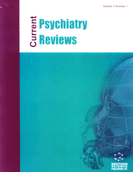Abstract
Suicide is a major public concern and in the teenage population it is the third leading cause of death. Its neurobiology is not well-understood, but recent postmortem brain studies have provided greater understanding of the neurobiological abnormalities associated with suicide. Earlier postmortem brain studies focused on monoamine receptor subtypes, namely, serotonin, e.g., (5HT)1A, 5HT2A, and adrenergic receptors. Later, various components of the signaling cascades to which these receptors are linked were examined; 5HT2A or α1-adrenergic receptors are linked to the phosphoinositide (PI) signaling system, and β-adrenergic receptors are linked to the adenylyl cyclase (AC) system. These studies revealed abnormalities in the components of the signaling systems: G proteins, the effectors phospholipase C (PLC) and AC, or second and third messengers systems, such as protein kinase C (PKC) and protein kinase A (PKA). Further studies found that downstream transcription factors, such as cAMP-response-element-binding protein (CREB), were also affected. Here we critically review the studies, focusing primarily on monoamine receptors and the components of PI and AC signaling cascades in suicide, primarily in postmortem brain. These studies provide a better understanding of the pathophysiological abnormalities associated with suicide and may lead to new therapeutic agents targeting specific sites in the signaling cascade.
Keywords: Suicide, mood disorders, monoamine receptors, signal transduction, transcription factors, kinases
 9
9



